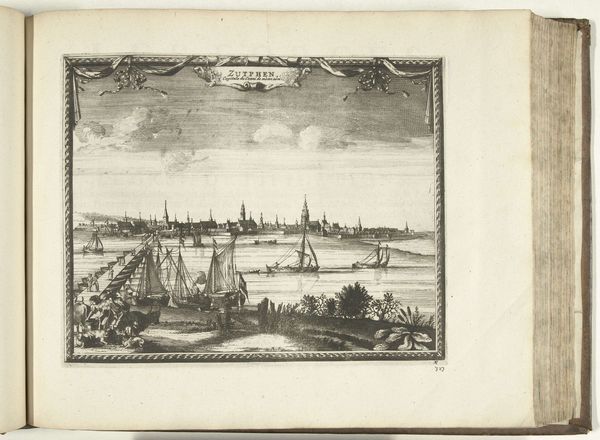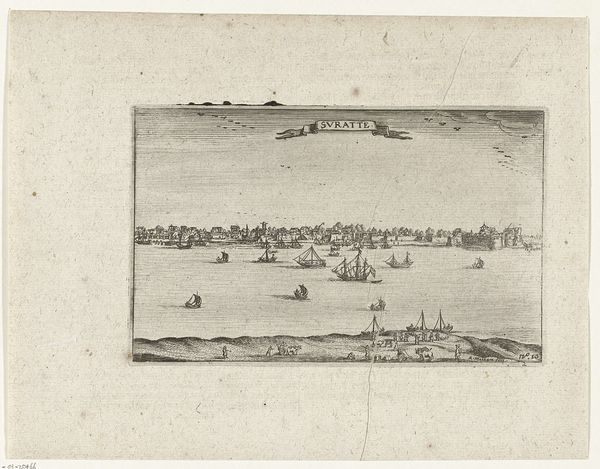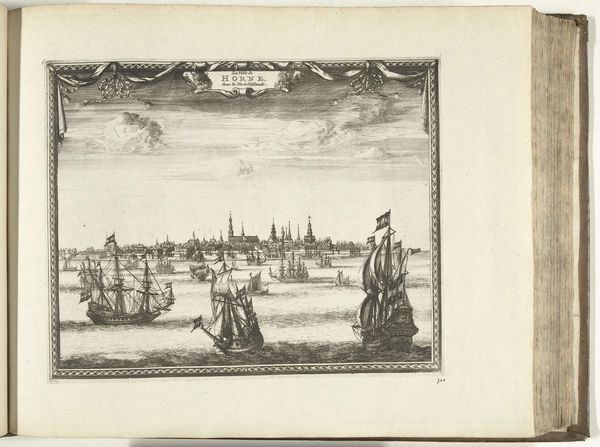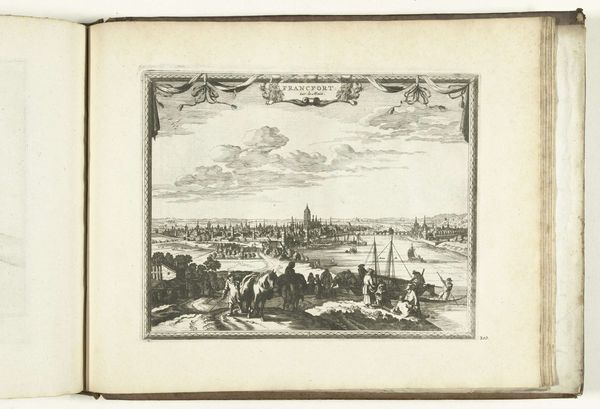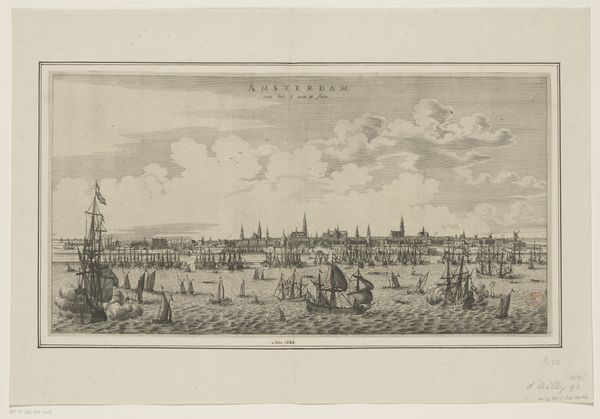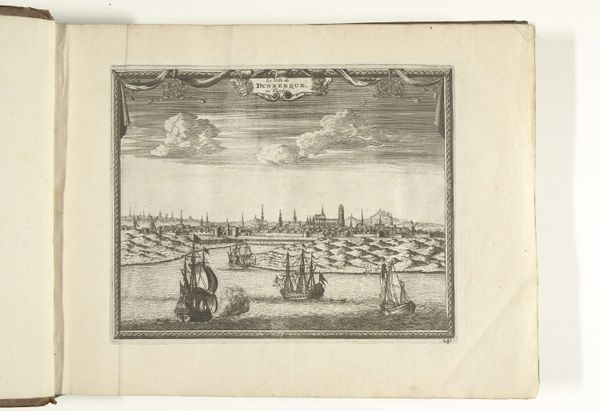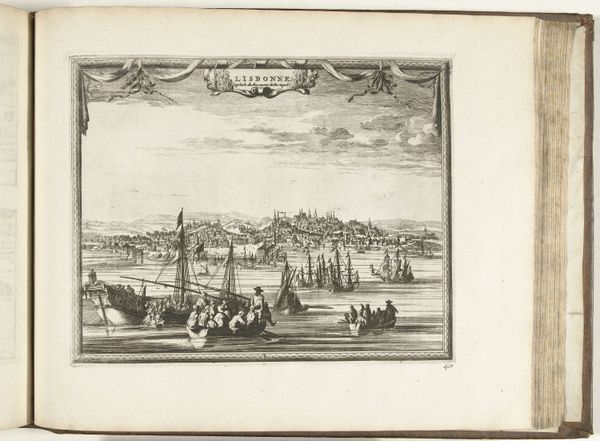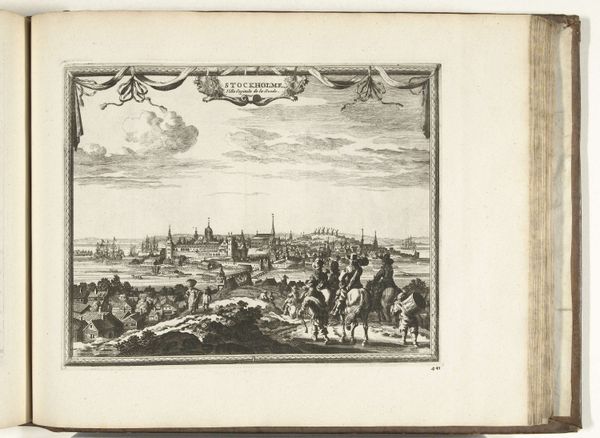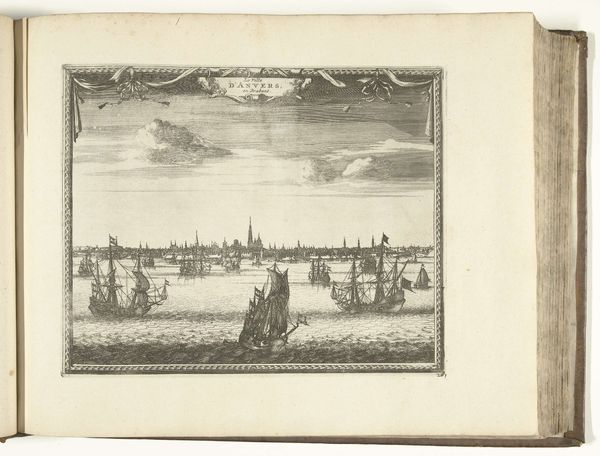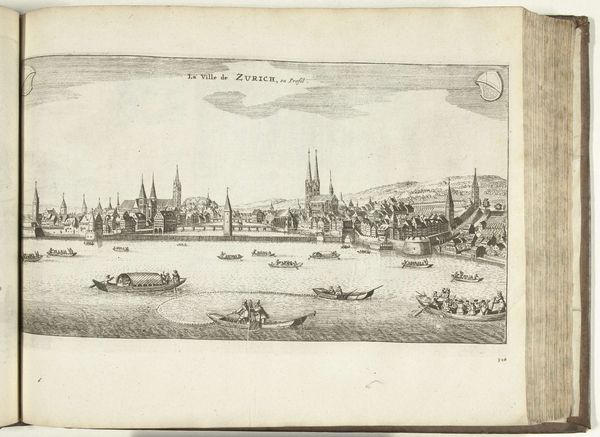
print, engraving
#
baroque
#
dutch-golden-age
#
ink paper printed
# print
#
landscape
#
line
#
cityscape
#
engraving
Dimensions: height 224 mm, width 277 mm
Copyright: Rijks Museum: Open Domain
Curator: Immediately, I'm drawn to the activity, all these small human elements depicted. Despite being an engraving, there's a real bustling energy emanating from it. Editor: Indeed. We’re looking at "Gezicht op Nijmegen, 1726," or "View of Nijmegen, 1726." It’s an anonymous piece from the Dutch Golden Age, rendered with ink on paper as a print. It’s held at the Rijksmuseum. Curator: The high vantage point is strategic, offering a panoramic view of the cityscape. It reminds me of those maps where one can survey the lay of the land, creating an almost psychological sense of mastery over your surroundings. The ships especially – their symbolism and role as connectors are quite interesting. Editor: Absolutely, that elevated perspective was a popular convention. Viewpoints like this conveyed civic pride and commercial prowess, especially for port cities like Nijmegen during this period. Look at the architecture, so meticulously rendered, symbolizing order and prosperity. The frame, adorned with decorative garlands, speaks to that desire to showcase this particular view as something worthy of aesthetic appreciation and civic pride. Curator: Garlands representing celebration! They also act to almost ‘coronate’ the image of the city. I’m intrigued by the light; there is a sharp contrast giving the shapes clarity and definition. Is it symbolic, do you think, or just characteristic of the baroque style? Editor: A bit of both, I think. The clarity certainly fits the Dutch Baroque aesthetic, emphasizing detail and realism. However, in this socio-political setting, the light falling across the city's structures underscores the idea of a divinely blessed, well-ordered society. These weren’t just pretty pictures; they served a real ideological purpose. Curator: I think it’s striking how even mundane daily activity, such as the boats navigating the river or figures milling in the cityscape, have been carefully documented to give us insight into the life and customs of this area during this period. Editor: Precisely. It's fascinating how this cityscape both reflects and constructs a very particular vision of its time and place. Curator: I never considered the propaganda aspect before! It casts such images in an entirely different, and more useful light. Editor: Exactly, the history of art lies in such symbolic layers.
Comments
No comments
Be the first to comment and join the conversation on the ultimate creative platform.
